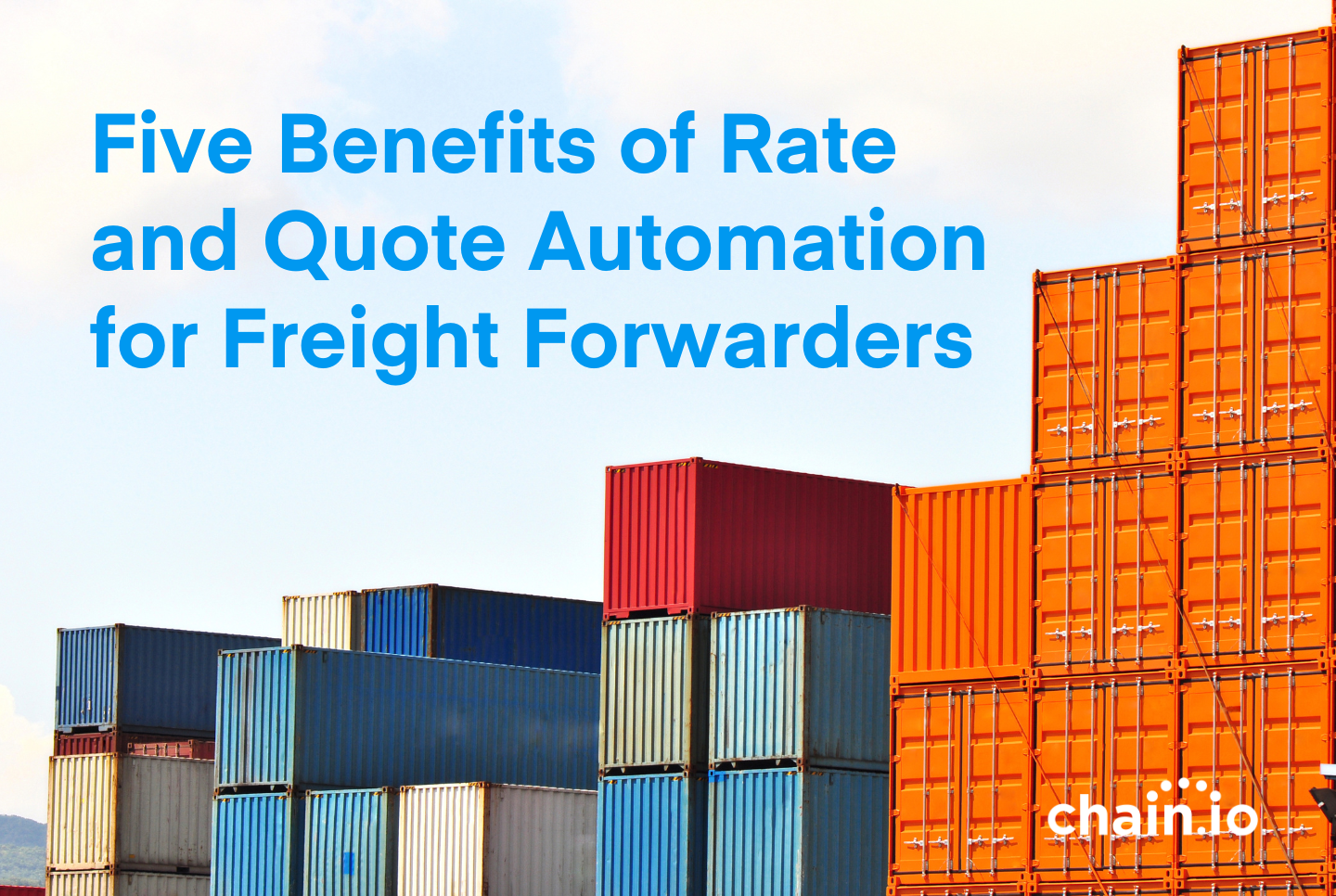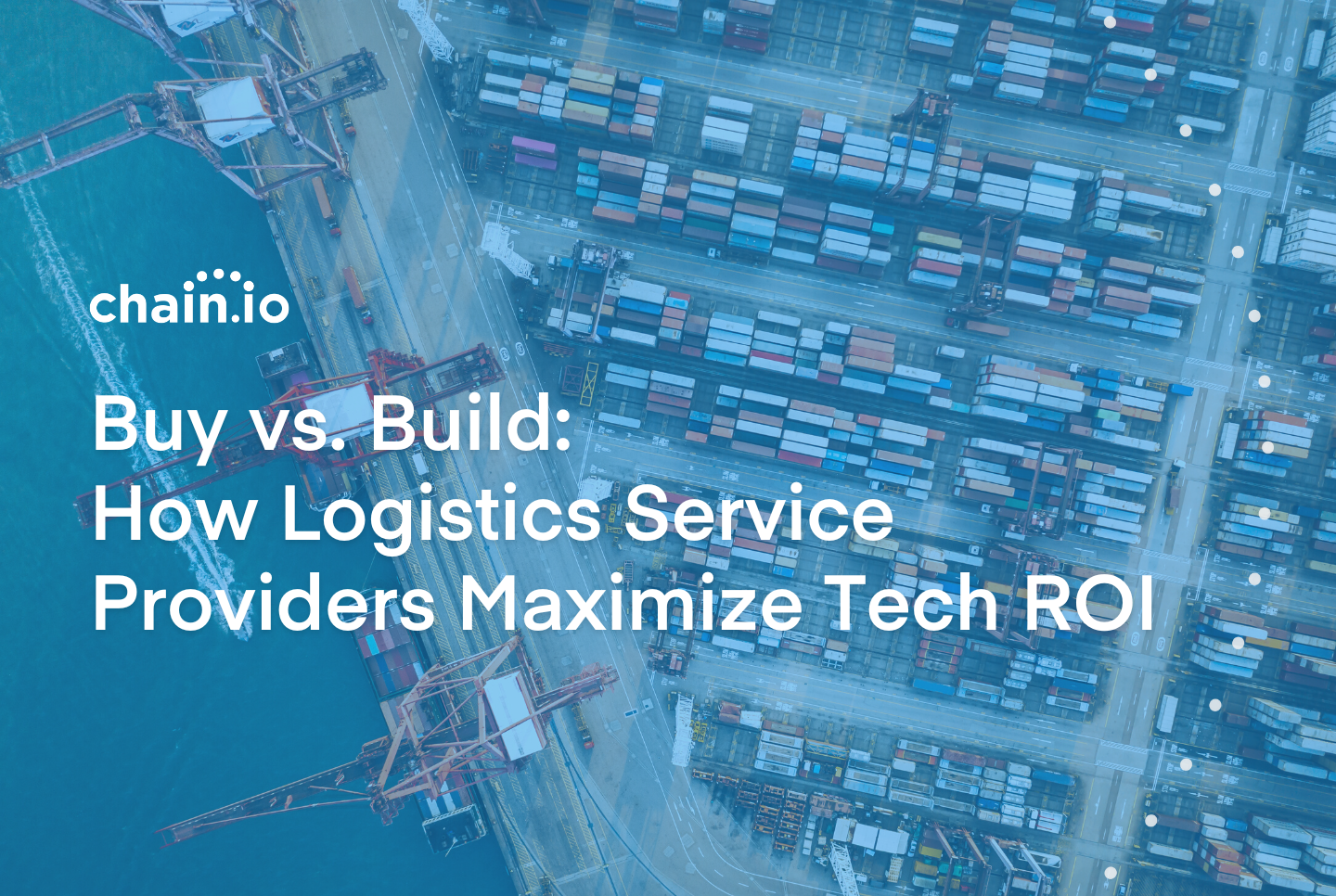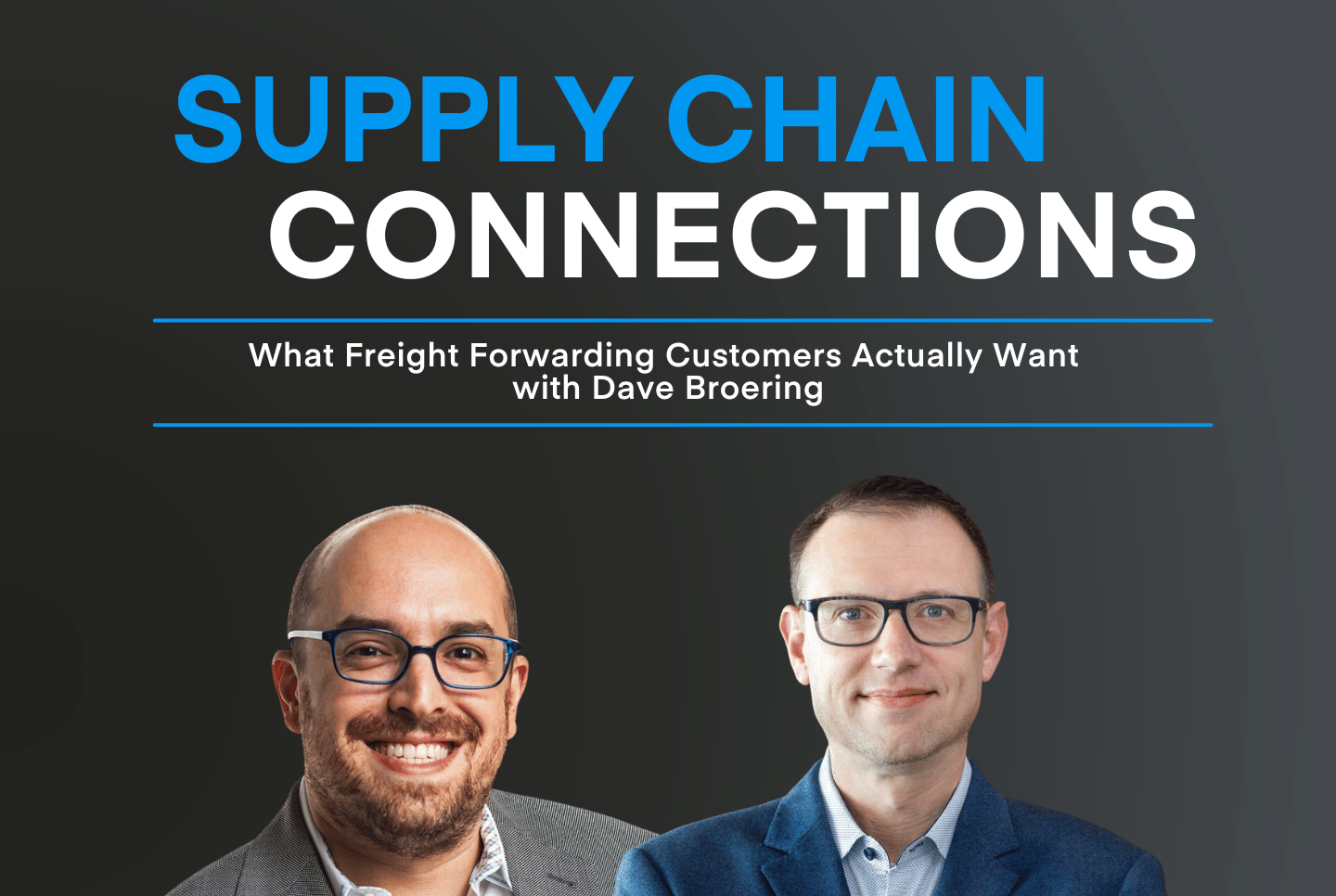
Imagine if you went out to dinner, and when the bill came, it was missing half your order. Or the restaurant added a surcharge that wasn’t listed anywhere. Now imagine you went back to the same restaurant, ordered the same meal, and had a completely different bill come out. That's how billing in the Freight Forwarding industry was described to me when I started my career.
The number of people and offices touching a single shipment, the charges that might be applied (or forgotten), and the variety of services being performed in order to get freight from an origin facility to a destination warehouse all add up to a woeful lack of consistency for many companies in our industry, often through no fault of their own. The ability to provide quick and accurate quotes backed up by consistent billing is as important as hiring the right people or investing in the best technology for any competitive freight forwarder. Unfortunately, the manual process of generating quotes, calculating freight prices and entering accessorial charges (was there a liftgate fee on that shipment? Who knows, it's already delivered!), and sending bills to customers is plagued by delays, errors, and discrepancies that cost you time and money, not to mention erode your customers' confidence.
Copying rates from one system to another, sending quotes via email or phone, and manually calculating pricing can lead to costly mistakes that negatively impact customer satisfaction and your bottom line. As a freight forwarder, you must find ways to streamline the pricing and quoting process to avoid these issues and remain competitive in an industry that is becoming increasingly digital and customer-focused.
Enter rate and quote automation - a solution that helps forwarders streamline the process of generating shipping quotes and managing rates. With rate and quote automation, you can position your business for long-term success in an industry that requires speed, accuracy, and agility.
Here are five ways automating rates and quotes can improve your efficiency, accuracy, cost savings, scalability, and competitiveness. Your customers won’t mind a liftgate fee; they will mind when it is applied seemingly at random.
1. Data Standardization
In today's digital age, your BCO customers expect more from you. They want a modern and streamlined experience, with quick and accurate quotes, clear and consistent pricing, and a seamless booking process. Rate and quote automations not only help you meet these expectations, but many forwarders find that their data is more accurate and consistent than with previous manual processes.
When leveraging a quote management system (QMS) or rate management system (RMS), rate and quote automation ensures greater consistency and accuracy in your pricing. This can help prevent errors and discrepancies, leading to greater customer satisfaction and loyalty.
Your customers want reliable and understandable information in the freight quoting process, so automating data between your QMS, RMS, and transportation management system (TMS) will help you deliver on those expectations with the best data possible.
2. Simpler Pricing Structures
Freight pricing and quoting can be a complex process. For each origin and destination pair, there is a base rate, which can vary depending on the mode of transportation and service level provided. For example, the air or ocean rate from Shanghai to Seattle will be different from the rate from Shanghai to Long Beach, or for multi-modal transportation.
Freight forwarders must also manage different service levels (express, standard, deferred) and weight breaks for air freight rates. Rates are often tiered based on the type of freight and its destination. While these rates have stabilized in recent months, managing buy rates versus sell rates is still crucial for forwarders. You must first buy space from a carrier and then sell that space to a customer, with margins being the primary source of revenue.
A rate and quote automation simplifies the freight pricing and quoting process by reducing the time and effort required to generate quotes and to convert the secured quotes into actual invoices. The complexity of freight rates makes the manual generation of quotes difficult and time-consuming, but by automating the process, you can quickly obtain accurate quotes from various carriers and shipping modes, making it easier to select the most cost-effective option for your customers.
3. Greater Accuracy and Consistency
Rate and quote automation tools rely on accurate and consistent data inputs to generate accurate pricing and quotes. As a forwarder, you must ensure that the data you provide to the automation tools is accurate and consistent across all of your systems and platforms. Integrating your TMS, WMS, or other management system with your RMS or QMS platform significantly reduces the risk of mis-billing, errors, and discrepancies that may have led to unhappy customers and extra time spent remedying mis-typed data, including sending multiple invoices to your customers for a single shipment. Again, imagine you’re at a restaurant and more bills keep coming even as you’re trying to walk out the door - that doesn’t make for a good experience.
With a rate and quote automation in place, you’ll:
- Quickly obtain real-time quotes from various carriers and shipping modes and compare them to select the most cost-effective option
- Automate price calculations based on weight, volume, and distance, ensuring that all quotes are generated consistently and accurately
- Be empowered to bring on new business opportunities and scale your operations without needing additional headcount
- Help your team grow and manage an influx of new quotes or bills without increased time or manual inputs
Rate and quote automations help you take your forwarding business to the next level. Using an RMS alone doesn’t eliminate data discrepancies or typos that lead to mis-billed customers, but implementing a rate and quote automation will ensure that the billing data in your TMS matches your pricing data in your RMS so you can bill your customers correctly the first time and don’t lose out on valuable revenue. In fact, Instead of relying on manual invoice data entry referencing an emailed quote that your freight operations agent didn’t create, you can establish a web portal for customers to plug in shipment details to see real-time freight rates or to send bills and quotes automatically.
4. Beat Competitve Pressures
By using RMS tools that are connected to your larger supply chain ecosystem, you can manage buy and sell rates more efficiently than other methods, giving your customers faster and more accurate support. Additionally, some RMS platforms come with pricing engines that provide carrier rates, allowing you to take advantage of any existing, contracted relationships with carriers to provide better pricing. This approach can result in lower shipping costs and better service levels for your customers, and higher margins for you.
Rate and quote automation can also help you to improve your customer’s buying experience, which is a critical factor in winning and retaining business. By using automation tools, forwarders can provide customers with faster and more accurate quotes, reducing response times and increasing customer satisfaction.
5. Better Connected Supply Chains
More than likely, you have existing systems in place for managing shipment operations, like a transportation management system (TMS), warehouse management system (WMS), or customer relationship management (CRM) platform. By integrating these systems, you can connect your company’s business processes across different departments, reducing the risk of silos and inefficiencies. Sometimes, the biggest communication bottlenecks are between internal teams.
For example, TMS, WMS, and CRM systems can provide additional data points for pricing calculations. This integration ensures that all pricing information is accurate and up-to-date, reducing the risk of errors caused by outdated or incorrect data.
Beyond the rate and quote process, integrating your RMS and TMS or other system gives you greater visibility and transparency across your entire supply chain, from the first quote to a shipment’s final destination. With a truly connected supply chain, you’ll be able to better manage and coordinate shipments, anticipate potential disruptions, and provide timely updates to customers.
Rate and Quote Automation from Chain.io
Without an integration between your RMS and TMS, your team is left to do hours of manual data entry and swivel chair work. They have to rekey every piece of information, manually create quotes, and take more time to respond to customers.
If you’ve already configured and implemented a rate management system, you’re leaving money on the table without also investing in rate and quote automation.
Your operators have likely spent time rekeying shipment details between your TMS and RMS, waiting on a rate, then manually entering those details back into your TMS, when they could have spent time moving more shipments. Not only is this a time consuming and unscalable process, but there is a major risk when relying on manual data entry that can lead to mis-billing customers.
Chain.io’s rate and quote automation solution connects your best-in-class rate management system to your TMS for auto-rating excellence while creating new opportunities for cost savings by immediately creating shipments once quotes are approved. Forwarders who’ve implemented a rate and quote automation solution from Chain.io have noticed major time savings, greater operational efficiency, a more streamlined billing process, and happier customers.
How Chain.io Helps

Chain.io extracts freight information from your TMS, delivers it to your RMS, and creates bookings directly in your TMS, automating the pricing and secured quote delivery process. By automating these tasks, you’ll save time, reduce errors, and be better equipped to focus on other areas of your business.

Explore our rate and quote automation solution and book a demo with one of our supply chain experts to learn more. (Your operators and customers will thank you!)
Explore SolutionsBook a Demo

